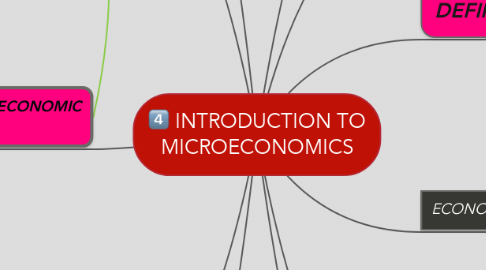
1. INTERDEPENDENCE AND THE GLOBAL ECONOMY
1.1. Mutual dependence at a global level. One country depends on another country for something and that country may depend on another country, which eventually creates global interdependence. Importing and exporting of goods and services highly contributes to global interdependence.
2. ECONOMIC PROBLEM
2.1. Basic economic problems arise due to man’s unlimited wants and limited factors of production
2.2. Man’s unlimited wants have resulted in four basic economic problems.
3. FUNDAMENTAL ECONOMIC PROBLEMS
3.1. Problems of scarcity – occur when goods and services are limited to compare to man’s unlimited wants and desires.
3.2. Problems of choice – arise when we are faced with problems of scarcity
3.3. Problems of opportunity cost – second best option that will have to be forgone in order to select the best option.
4. Land : Inputs into production that are provided by nature such as raw materials from the surface of earth, mineral, forest, oil deposits The reward : Rent
5. MACROECONOMICS
5.1. The study of study of the large economy as a whole or economic aggregates
6. DEFINITION
6.1. A study of how people make use of scarce resources to fulfill their unlimited wants.
7. USEFULNESS OF ECONOMY
7.1. Economics provides an objective mode of analysis, with rigorous models that are predictive of human behavior.
8. MICROECONOMIC
8.1. The study of small economic units such as individuals, firms and industries
9. ECONOMIC RESOURCES
9.1. Labor : All forms of human input both physical and mental into current production. For e.g.: doctors, lecturer The reward : Wage / Salary
9.2. Capital: All inputs into production that have themselves been produced such as machines, factories, equipments The reward : Interest
9.3. Entrepreneur: The person who has the capability to combine all resources into the production of goods & services The reward : Profit
10. ASSUMPTION IN ECONOMIC
10.1. Consist of tangible items & services that are used to fulfill the wants & society.
10.1.1. Goods can be divided into 3 categories:- Economic goods, Free goods, Public goods
10.1.1.1. Economic Goods – are scarce goods which the quantity demanded exceeds the quantity supplied at a zero price and whose usage involves prices and opportunity costs. Economic goods can be divided into two;
10.1.1.1.1. Consumer goods – or final goods are goods that yield satisfaction to the consumer. These items can be classified into durable goods such as electrical fans and radios, or perishable goods such as food
10.1.1.1.2. Capital goods – are not intended for final use, but are used to produce other goods. For e.g. machinery, factories
10.1.1.2. Free Goods - or non-scarce goods are naturally occurring goods that are unlimited and available without any cost.
10.1.1.3. Public goods – are non-excludable and are not subject to decision made by individuals.
